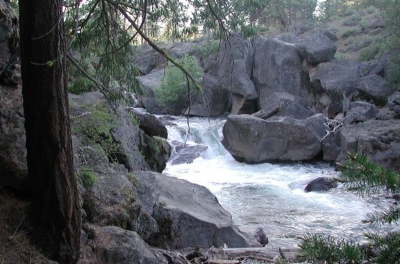
|
Current refers to the speed of the movement of water. This can be very fast, especially in the mountains, close to the source of the river. River currents have tremendous power – they can tear out boulders and carry huge rocks and smash them deep into the riverbed. As the river reaches the plains, the current slows it down; causing it to deposit a lot of the debris it carried, creating a wider valley with fertile soil. |
Rivers and streams begin their lives as smaller creeks, often called “the headwaters”. These small tributaries flow downhill until they merge to form bigger tributaries, which continue merging to form larger rivers. Rivers keep flowing to lower altitudes, towards the oceans. River systems are similar to the blood vessels in your body. Tiny capillaries that carry blood keep merging together until all of the blood empties into large veins, which deliver the blood to your heart.
All rivers are surrounded by a certain amount of land that is higher in altitude (upgradient) than the actual river. Precipitation that falls in this area eventually flows downhill towards the river. At any particular point on a river, the land upgradient of the point is the river’s watershed, or drainage basin. This example of a watershed gives a rough idea of how precipitation flows downhill into rivers (and lakes) movement of a fluid within a larger body of that fluid. Fluids are materials capable of flowing and easily changing shape. The most familiar natural fluid is water. But air is considered a fluid as well. Electricity can also flow as a current.
Air currents flow in the atmosphere, the layer of air surrounding the Earth. Water currents flow in rivers, lakes, and, oceans. Electric currents flow through power lines or as lightning.
Credit: usgs.gov
Picture Credit : Google




